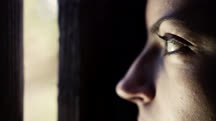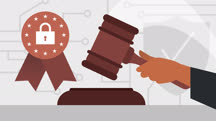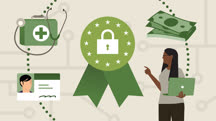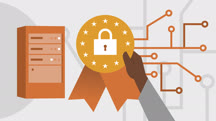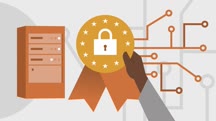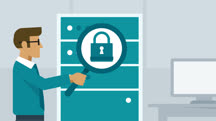Course catalog
Categories
Showing 1,701-1,720 of 9,135 items.
Cinema 4D: Camera Animation
Learn to create useful and unique camera movements (including moves from Hollywood classics) for any type of project with CINEMA 4D.
Cinema 4D: Cloth Simulations for Motion Graphics
Learn to build a cloth simulation—simulated curtains, flags, and reveals—with the CINEMA 4D cloth system.
Cinema 4D: Creating Materials
Add realism and character to your 3D models with materials in CINEMA 4D.
Cinema 4D: Dynamics
Learn how to use CINEMA 4D dynamics to create physically accurate object animations, using real-world physics like gravity, collisions, and bounces.
Cinema 4D: Principles of Motion Graphics
Learn the basics of motion graphics as they apply to Cinema 4D. Discover how to use typography, color, textures, lighting, and transitions and the rich mograph toolset in C4D.
Cinema 4D: Studio Lighting
Learn to light diffuse, reflective, and transparent objects in CINEMA 4D.
Cinema 4D: X-Particles and Redshift Techniques
Explore intermediate to advanced techniques used in the Redshift workflow for X-Particles, the particle and VFX system for MAXON Cinema 4D.
Cinematic Composition for Video Productions
Eduardo Angel breaks down effective cinematic composition, showing how to achieve different compositional effects using a variety of techniques.
Cinematic Video Lighting
Get tips on choosing lighting equipment, setting up low-key lighting, and shooting great interviews, B-roll, and more. Use these video lighting techniques to get cinematic results.
Cinematography: Maya
Learn how to expertly control and animate cameras in your Maya projects and give viewers a window into your 3D world.
CIPP/US Cert Prep: 1 U.S. Privacy Environment
Prepare for the Introduction to the U.S. Privacy Environment domain of the Certified Information Privacy Professional/US (CIPP/US) exam.
CIPP/US Cert Prep: 2 Private Sector Privacy
Prepare for the Limits on Private Sector Collection and Use of Data domain of the Certified Information Privacy Professional/US (CIPP/US) exam.
CIPP/US Cert Prep: 3 Government and Court Access to Information
Prepare for the Introduction to the Government and Court Access to Private-Sector Information domain of the Certified Information Privacy Professional/US (CIPP/US) exam.
CIPP/US Cert Prep: 4 Workplace Privacy
Study for the Workplace Privacy domain of the Certified Information Privacy Professional/US (CIPP/US) exam.
CIPP/US Cert Prep: 5 State Privacy Laws
Explore state privacy laws as you prepare for the fifth domain of the Certified Information Privacy Professional/US (CIPP/US) exam.
CIPP/US Cert Prep: The Basics
Get an overview of the Certified Information Privacy Professional/United States (CIPP/US) exam. Learn about each of the five exam domains, as well as the overall structure of the test.
CIPP/US Cert Prep: The Basics (217954)
Are you a current or aspiring privacy professional looking to take the CIPP/US exam? In this course, instructor Mike Chapple gives you an overview of the Certified Information Privacy Professional/United States (CIPP/US) exam resources available through LinkedIn Learning. Mike introduces the CIPP/US exam, reasons to take it, and study resources that are available to you. After showing you through the exam and question types, he explores the domains of the CIPP/US exam: the US privacy environment, the private sector privacy domain, the domain covering government and court access to information, the workplace privacy domain, and the domain devoted to state privacy laws. Mike also goes over what you can expect after the exam, with continuing education requirements, score reports and how to interpret them, and so on.
CircuitPython: Connecting a Robot Cat to the Internet (233186)
While many Internet of Things projects send data to the cloud, sometimes you want a physical indication of an event from the internet. In this course, Charlyn Gonda shows you how to use CircuitPython—a version of Python specifically for microcontrollers—to program a robot cat that reacts to events while connected to the internet. Charlyn shows how to code for common hardware devices like LEDs and servos, and explains a common messaging protocol for IoT projects called message queue telemetry transport, or MQTT. If you’re looking for an internet cat video that actually teaches you something useful, join Charlyn as she shows how to program this robot cat.
CISA Cert Prep: 1 Auditing Information Systems for IS Auditors
Demonstrate your ability to audit, control, and monitor information systems to earn a CISA certification. Prepare for the Process of Auditing Information Systems part of the exam.
CISA Cert Prep: 2 Information Technology Governance and Management for IS Auditors
Learn how to conduct IT governance audits around documentation, risk management, business continuity, and disaster recovery, and study to pass the CISA certification exam.







